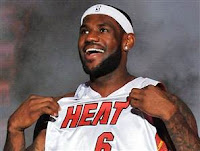Gentlemen,
Start Your Engines:
My Sports Autobiography
Streaks of sun bounce off the chrome
moldings and then flash across my field of vision. The engines around me rev and race, and I
uncharacteristically pin the clutch of my street car to the floor as I await
the starting signal. Carmine’s yellow
steward’s uniform pinches his multiple rolls of stomach, chest, and arms as he
spreads out into my passenger’s seat.
“Okay. So. Look ahead.
Anticipate the curve. Slow in, fast out. You can do this,” he adds
hesitantly, staring into my eyes. “It’s
all about the apex. Figure out where the
apexes are, and you’ll be fine.”
The verdant Lime Rock Raceway
stretches before me and undulates with the Connecticut rolling hills. I process
Carmine’s advice and the information from the driver’s meeting, otherwise known
as rookie orientation. Oddly, I feel
cast back on this thin March afternoon to another day, a scorching Sunday, so
long ago, in which I move with a small teenaged horde of males at the local
speedway. Ah, the smell of oil dripping
on a hot engine! The glorious roar of a
shaking exhaust! The vibrations
retreating and flowing through my body as car upon stock car wrapped around the
banked ovals. It was paradise.
To some, being the only girl in a
neighborhood of male boys must seem as if it had been a burden, a series of
barriers, endless feelings of isolation and embarrassment. But, to me, hurling a baseball across the
plate and hearing the slap of bat across open air, or bracing for the thud and
blow of a hip check across low and weedy skating marshes, or holding my breath
while the basketball hangs in midair before a “swish-sh” joyously fills the
court--- these are the memories of playing and competing as a girl right alongside
the boys.
We swam in a wildlife pond, with
the cattails encroaching and tickling us.
We climbed evergreen trees dabbled in pitch that hid nests of
white-faced hornets. We shot marbles,
built tree houses, skipped stones, and hiked deep into the woods. Our common connection to the natural and
physical world largely transcended our childhood gender differences.
My immersion into the world of
males and sports was fully complete by the time I was a 30-something year old
adult. I was already moving daily and
readily with the rhythms, habits, and culture of sport, and, so, my early love
of stock car racing morphed into F1 international fandom and I traveled to
various tracks to live vicariously through Mika, David, and Mark.
At the Lime Rock track day, the
lights--- finally--- skip from red to green!
I let out the clutch, snap the gas pedal to the floor, and shoot down
the long straight. Looking ahead as
Carmine advises, I come into the first curve.
“Don’t look at the road right in front of you. Forget the other drivers. Don’t break too early! Hold the line until the last moment. Keep up the speed! No—don’t downshift. Stay in gear.” My throat closes and feels like dry parchment
as my mouth drains of saliva.
The first lap of this track
session consists of “follow the leader.” There is no passing allowed, and we
are to all trace the column of cars in front of us so that on-track instructors
like Carmen can show us the proper line to take around the track. I clench the
steering wheel, my fingers bloodless and yet pulsing. I shift coming into Big
Bend. “So. Start on the outside of the
track. Drive as straight as possible,” Carmine intones. I try to hide my fear
of being knocked off the track, or causing an incident by pulling out to pass a
slower car, or being unaware of a faster car closing in to overtake me. The
curve sways and curls and tucks until a short straight. Then the road course meanders up a quick hill
to a crest, a right turn that falls away, and a long sweep down to two quick
rights. Pressure builds in my temples as my body floats as one with the car.
And then I shift again as we are
back by the pits and out onto the long straight. “You’re getting it. Use the whole track. Better.
Look ahead, not down. No—don’t downshift. Keep up the speed,” Carmen guides, a small
smile creeping into the corners of his mouth.
“Exit all the way to the outside margin:
track out.” My speeds increase
with each successive lap until we are moving fast, really fast. I see 90 miles per hour in a quick glance at
the dashboard. More?
Again and again, I look ahead to
find the apex, attempting to anticipate what is to become rather than to assess
when I am. Four times, five times: the small track begins to embed in my
memory. Fall off, right. Drift back and up. Weave left, feign right. I feel tendrils of hair escape and blow
across my cheeks.
And while part of me is a 50+
year-old female out on the track for the biggest half-hour of her life, another
part of me is that teenager who kept finding adventure and excitement and
connection to others through the world of sport. My adrenaline soars, my heart races, and my
spirit settles into a meditative calm on that cold March day at Lime Rock. No, I’ll not go back out onto a race track
again. I’ll leave that to Felipe and Danika and Fernando. But I’ll be one with the track, the lake, and
field, and the course as a fan and occasional participant. It’s sport that makes me, in part, who I am,
and the memory of speed is enough.












